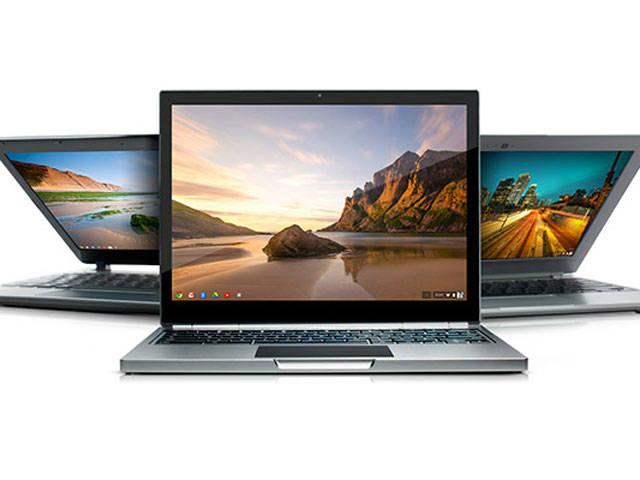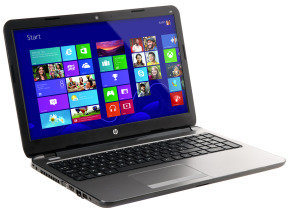Source:- Google.com.pk
Early Intel processors started at physical address 000FFFF0h. When a modern x86 microprocessor is reset, it starts in pseudo 16-bit real mode, initializing most registers to zero. The code segment register is initialized with selector F000h, base FFFF0000h, and limit FFFFh, so that execution starts at 4 GB minus 16 bytes (FFFFFFF0h).[9] The platform logic maps this address into the system ROM, mirroring address 000FFFF0h.
If the system has just been powered up or the reset button was pressed ("cold boot"), the full power-on self-test(POST) is run. If Ctrl+Alt+Delete was pressed ("warm boot"), a special flag value is stored in nonvolatile BIOS memory ("CMOS") before the processor is reset, and after the reset the BIOS startup code detects this flag and does not run the POST. This saves the time otherwise used to detect and test all memory.
The POST checks, identifies, and initializes system devices such as the CPU, RAM, interrupt and DMA controllersand other parts of the chipset, video display card, keyboard, hard disk drive, optical disc drive and other basichardware.
Early IBM PCs had a little-known routine in the POST that would attempt to download a program from into RAM through the keyboard port. (Note that no serial or parallel ports were standard on early IBM PCs, but a keyboard port of either the XT or AT / PS/2 type has been standard on practically every PC and clone.) If the download was apparently successful, the BIOS would verify a checksum on it and then run it.[10] This feature was intended for factory test or diagnostic purposes. While it was of limited utility outside of factory or repair facilities, it could be used in a proprietary way to boot the PC as a satellite system to a host machine (which is essentially the same technical way it was used, if it was used, in the manufacturing environment).
§Boot process[edit]
After the option ROM scan is completed and all detected ROM modules with valid checksums have been called, or immediately after POST in a BIOS version that does not scan for option ROMs, the BIOS calls INT 19h to start boot processing. Post-boot, Programs loaded can also call INT 19h to reboot the system, but they must be careful to disable interrupts and other asynchronous hardware processes that may interfere with the BIOS rebooting process, or else the system may hang or crash while it is rebooting. Unique to the original IBM BIOS was that it would attempt to load a maintenance program through the keyboard port before performing any other elements of the boot process, such as before scanning for option ROMs or executing a boot loader.[11]
When INT 19h is called, the BIOS attempts to locate boot loader software held on a storage device designated as a "boot device", such as a hard disk, a floppy disk, CD, or DVD. It loads and executes the first boot software it finds, giving it control of the PC.[12] This is the process that is known as booting (sometimes informally called "booting up"), which is short for "bootstrapping".
The BIOS selects candidate boot devices using information collected by POST and configuration information fromEEPROM, CMOS RAM or, in the earliest PCs, DIP switches. Following the boot priority sequence in effect, BIOS checks each device in order to see if it is bootable. For a disk drive or a device that logically emulates a disk drive, such as a USB Flash drive or perhaps a tape drive, to perform this check the BIOS attempts to load the first sector (boot sector) from the disk into RAM at memory address 0x0000:0x7C00. If the sector cannot be read (due to a missing or unformatted disk, or due to a hardware failure), the BIOS considers the device unbootable and proceeds to check the next device. If the sector is read successfully, some BIOSes will also check for the boot sector signature 0x55 0xAA in the last two bytes of the (512 byte long) sector, before accepting a boot sector and considering the device bootable.[nb 1]
The BIOS proceeds to test each device sequentially until a bootable device is found, at which time the BIOS transfers control to the loaded sector with a jump instruction to its first byte at address 0x0000:0x7C00 (exactly 1 KiB below the 32 KiB mark); see MBR invocation and VBR invocation. (This location is one reason that an IBM PC requires at least 32 KiB of RAM in order to be equipped with a disk system; with 31 KiB or less, it would be impossible to boot from any disk, removable or fixed, using the BIOS boot protocol.) Most, but not all, BIOSes load the drive number (as used by INT 13h) of the boot drive into CPU register DL before jumping to the first byte of the loaded boot sector.
Note well that the BIOS does not interpret or process the contents of the boot sector other than to possibly check for the boot sector signature in the last two bytes; all interpretation of data structures like MBR partition tables and so-called BIOS Parameter Blocks is done by the boot program in the boot sector itself or by other programs loaded through the boot process and is beyond the scope of BIOS. Nothing about BIOS predicates these data structures or impedes their replacement or improvement.
A non-disk device such as a network adapter attempts booting by a procedure that is defined by its option ROM or the equivalent integrated into the motherboard BIOS ROM. As such, option ROMs may also influence or supplant the boot process defined by the motherboard BIOS ROM.The user can control the boot process, to cause one medium to be booted instead of another when two or more bootable media are present, by taking advantage of the boot priority implemented by the BIOS. For example, most computers have a hard disk that is bootable, but usually there is a removable-media drive that has higher boot priority, so the user can cause a removable disk to be booted, simply by inserting it, without removing the hard disk drive or altering its contents to make it unbootable.
In most modern BIOSes, the boot priority order of all potentially bootable devices can be freely configured by the user through the BIOS configuration utility. In older BIOSes, limited boot priority options are selectable; in the earliest BIOSes, a fixed priority scheme was implemented, with floppy disk drives first, fixed disks (i.e. hard disks) second, and typically no other boot devices supported, subject to modification of these rules by installed option ROMs. The BIOS in an early PC also usually would only boot from the first floppy disk drive or the first hard disk drive, even if there were two drives of either type installed. All more advanced boot priority sequences evolved as incremental improvements on this basic system.
Historically the BIOS would try to boot from a floppy drive first and a hard disk second. The default for CD or DVD booting is an extension of this. With the El Torito optical media boot standard, the optical drive actually emulates a 3.5" high-density floppy disk to the BIOS for boot purposes. Optical disks are a special case, because their lowest level of data organization is typically a fairly high-level file system (e.g. ISO 9660 for CD-ROM).
Reading the "first sector" of a CD-ROM or DVD-ROM is not a simply defined operation like it is on a floppy disk or a hard disk. Furthermore, the complexity of the medium makes it difficult to write a useful boot program in one sector, even though optical media sectors are typically 2048 bytes each, four times the standard 512-byte size of floppy and legacy hard disk sectors. Therefore, optical media booting uses the El Torito standard, which specifies a way for an optical disk to contain an image of a high-density (1.44 MB) floppy disk and for the drive to provide access to this disk image in a simple manner that emulates floppy disk drive operations. Therefore, CD-ROM drives boot as emulated floppy disk drives; the bootable virtual floppy disk can contain software that provides access to the optical medium in its native format.
§Boot failure[edit]
The behavior if the BIOS does not find a bootable device has varied as personal computers developed. The original IBM PC and XT had Microsoft Cassette BASIC in ROM, and if no bootable device was found, ROM BASIC was started by calling INT 18h. Therefore, barring a hardware failure, an original IBM PC or XT would never fail to boot, either intoBASIC or from disk (or through an option ROM). One model of the original IBM PC was available with no disk drive; a cassette recorder could be attached via the cassette port on the rear, for loading and saving BASIC programs to tape. Since few programs used BASIC in ROM, clone PC makers left it out; then a computer that failed to boot from a disk would display "No ROM BASIC" and halt (in response to INT 18h).
Later computers would display a message like "No bootable disk found"; some would prompt for a disk to be inserted and a key to be pressed, and when a key was pressed they would restart the boot process. A modern BIOS may display nothing or may automatically enter the BIOS configuration utility when the boot process fails. Unlike earlier BIOSes, modern versions are often written with the assumption that if the computer cannot be booted from a hard disk, the user will not have software that they want to boot from removable media instead. (Lately, typically it will only be a specialist computer technician who does that, only to get the computer back into a condition where it can be booted from the hard disk.)
Laptop Wallpapers Free Download Wallpaper Download For Mobile Free Hd for Mobile Free Image Search for Pc Love Hd 3d free For Mobile
Laptop Wallpapers Free Download Wallpaper Download For Mobile Free Hd for Mobile Free Image Search for Pc Love Hd 3d free For Mobile
Laptop Wallpapers Free Download Wallpaper Download For Mobile Free Hd for Mobile Free Image Search for Pc Love Hd 3d free For Mobile
Laptop Wallpapers Free Download Wallpaper Download For Mobile Free Hd for Mobile Free Image Search for Pc Love Hd 3d free For Mobile
Laptop Wallpapers Free Download Wallpaper Download For Mobile Free Hd for Mobile Free Image Search for Pc Love Hd 3d free For Mobile
Laptop Wallpapers Free Download Wallpaper Download For Mobile Free Hd for Mobile Free Image Search for Pc Love Hd 3d free For Mobile
Laptop Wallpapers Free Download Wallpaper Download For Mobile Free Hd for Mobile Free Image Search for Pc Love Hd 3d free For Mobile
Laptop Wallpapers Free Download Wallpaper Download For Mobile Free Hd for Mobile Free Image Search for Pc Love Hd 3d free For Mobile
Laptop Wallpapers Free Download Wallpaper Download For Mobile Free Hd for Mobile Free Image Search for Pc Love Hd 3d free For Mobile
Laptop Wallpapers Free Download Wallpaper Download For Mobile Free Hd for Mobile Free Image Search for Pc Love Hd 3d free For Mobile
Laptop Wallpapers Free Download Wallpaper Download For Mobile Free Hd for Mobile Free Image Search for Pc Love Hd 3d free For Mobile










No comments:
Post a Comment